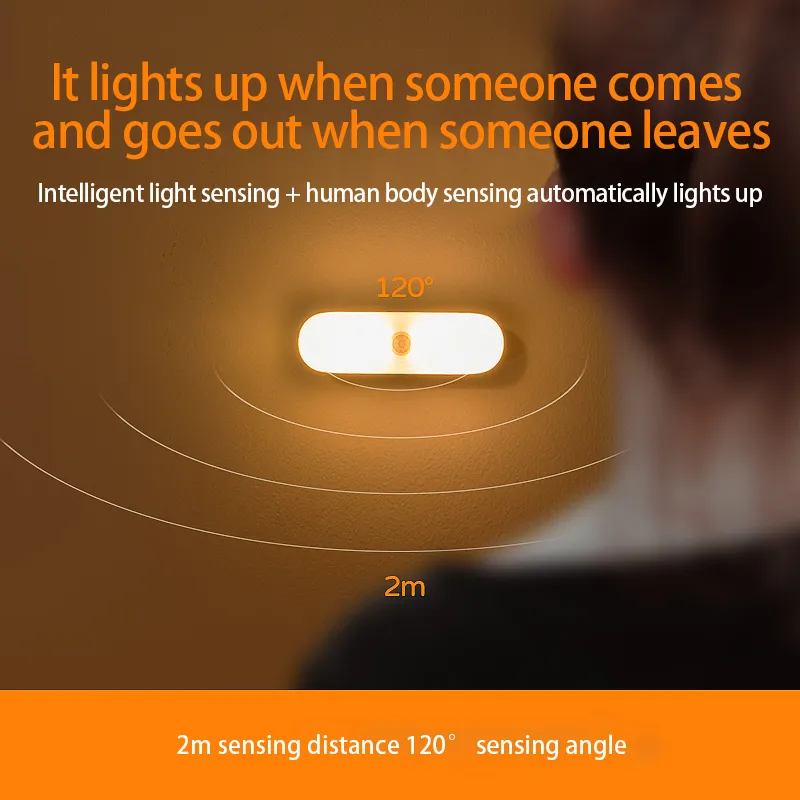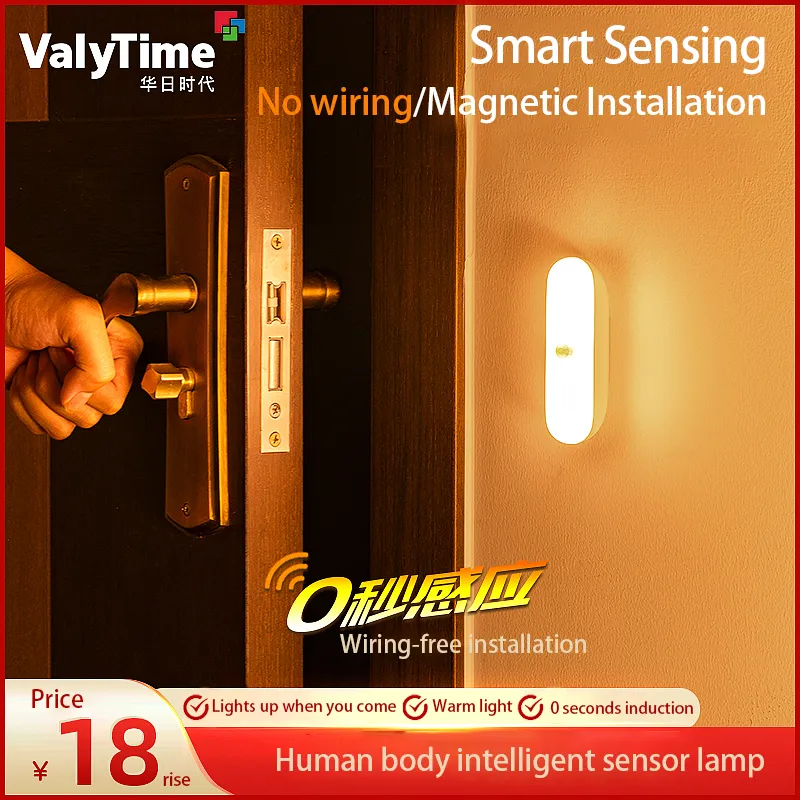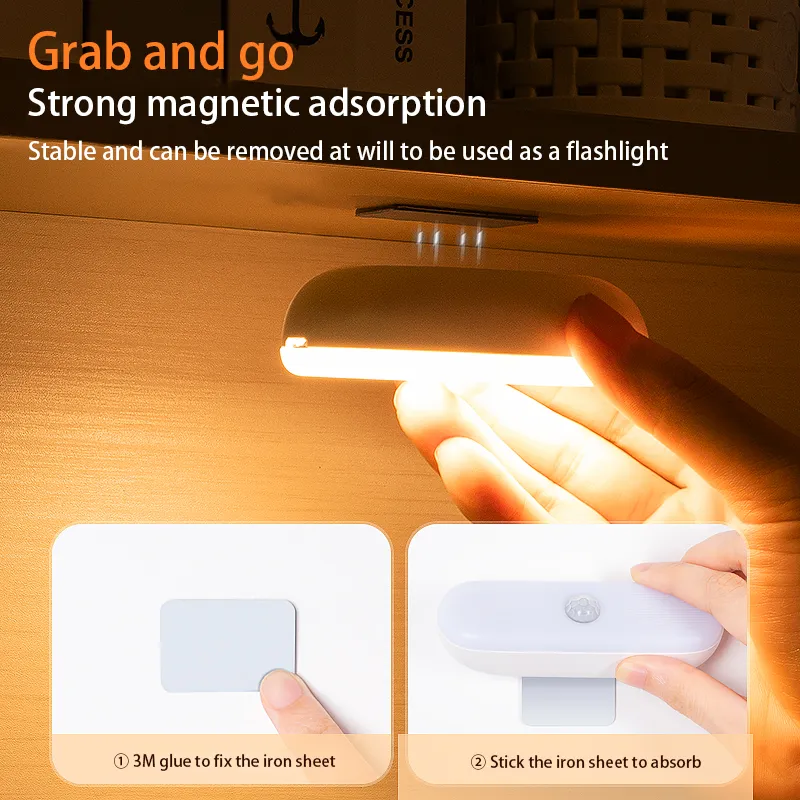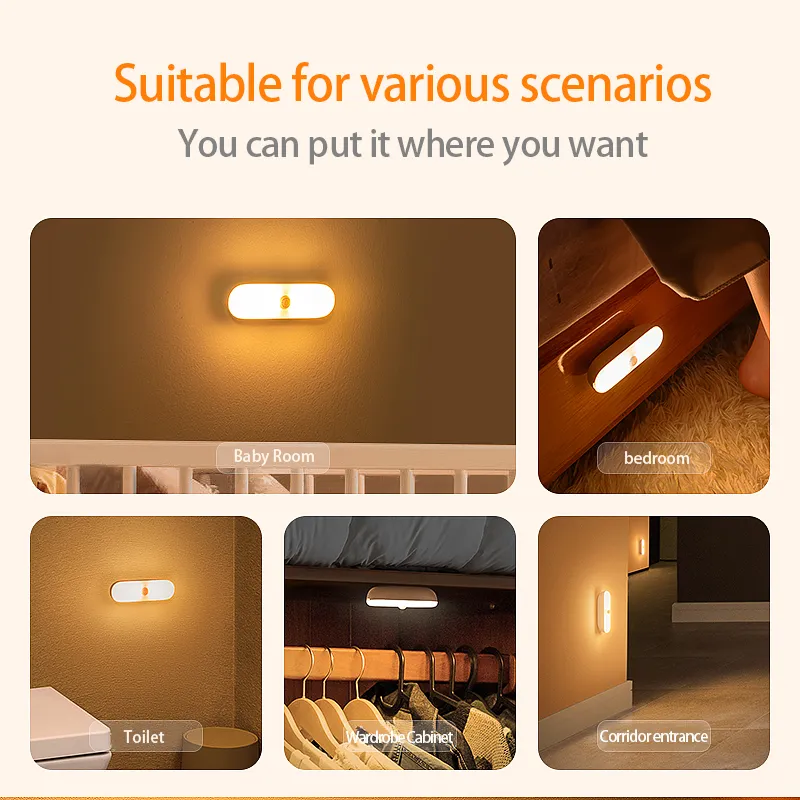Does the LED human body induction light only work at night?
As a lighting device with human body sensing function, the LED human body induction light recognizes the movement or human presence in the environment through the built-in sensor, and then automatically switches on and off. With the development of technology, such lamps have gradually entered every home. They not only bring convenience, but also provide energy efficiency and safety. However, many users may wonder during use, does the LED human body induction light only work at night?
The answer to this question not only involves its working principle, but also how we can maximize its use efficiency. This article will answer this question in detail and explore the working principle, function and usage scenarios of the LED human body induction light.

How does the LED human body induction light work?
The core of the LED human body induction light lies in its built-in sensor. Unlike traditional lamps, the LED human body induction light can automatically detect environmental changes, especially human movement, through sensors. Most of these sensors are based on the following technologies:
● Infrared sensor (PIR): PIR sensor is the most common sensor used for human body sensing lamps. It determines whether someone is approaching by sensing the heat (infrared radiation) emitted by the human body. Once the sensor detects human motion, the light turns on automatically; when no human motion is detected, the light turns off automatically.
● Photosensitive sensor: Some LED human induction lamps have built-in photosensitive sensors (light sensors) that can determine whether they need to be turned on based on the light intensity of the surrounding environment. For example, when there is sufficient light during the day, the photosensitive sensor will keep the lamp off; at night or when the light is dim, it will automatically turn on to provide sufficient lighting.
● Ultrasonic sensor: Compared with infrared sensors, ultrasonic sensors can detect the movement of objects, including humans, more accurately. It determines whether there is movement of objects or people in the space by emitting and receiving ultrasonic signals, and has a wider detection range.
Based on the working principles of these sensors, LED human body induction lights can automatically switch on and off without human intervention to provide a smarter lighting experience.

Working environment and time of LED human body induction light
So, does LED human induction lamp only work at night? The answer is not simple. In fact, whether LED human body induction light works at night depends mainly on its built-in sensor configuration and the actual needs of users.
Effect of photosensors
Many modern led human body induction lights are equipped with photosensors. These sensors sense the light intensity of the surrounding environment and decide whether to turn on the light. When the light intensity is high, such as during the day or when there is sufficient lighting in the room, the photosensor triggers the light to turn off. Conversely, when the light intensity is low, the light turns on automatically. Therefore, these lights are usually off during the day and only turn on automatically when the environment becomes darker.
For example, at night, when the light is low, the photosensor determines the current light conditions and determines whether the led human body induction light should be turned on. In this process, the role of the sensor is to ensure that the light does not waste power when it is not needed. Therefore, led human induction lamps equipped with photosensors not only work at night, they also flexibly adjust to the indoor and outdoor light conditions.
The role of infrared sensors
Another common sensor is the infrared sensor (PIR), which mainly detects whether there is movement by sensing heat. Unlike photosensors, infrared sensors do not rely on light intensity. They can detect whether the light is turned on based on the heat and movement of the human body. Therefore, when the LED human induction lamp is equipped with an infrared sensor, its working time is not limited by light conditions.
When the user approaches or moves within the sensing range, the lamp will automatically light up, whether it is day or night. This means that the LED human body induction light can still work during the day or night without a photosensitive sensor, which is particularly suitable for places that need to continuously monitor activities or be illuminated at all times, such as corridors, stairwells or bathrooms.
Ultrasonic sensors and environmental adaptability
Some higher-end LED human body induction lights use ultrasonic sensors. Unlike infrared and photosensitive sensors, ultrasonic sensors are not affected by light intensity, so this type of lamp can work all day and night. When the ultrasonic sensor detects movement or someone approaches, the lamp will automatically turn on. In actual use, this type of lamp can provide a full range of monitoring and lighting effects, especially for those scenes that require all-weather sensing.

What are the application scenarios of LED human body induction light?
The application range of LED human induction lamp is very wide and can play a role in different scenarios. According to the needs of users, these lamps can be adjusted according to different sensors and working modes to adapt to different usage environments.
Application in home environment
In the home environment, the application of LED human body induction light is very common, especially in places such as corridors, stairs, bedrooms and bathrooms. These places usually require low-brightness lighting to ensure the safety of family members when they move at night. LED human body induction lights equipped with photosensitive sensors can automatically adjust their working status according to external light, so they can provide appropriate lighting at night and remain off during the day to save energy.
In places such as stairs and corridors, LED human induction lamps equipped with infrared sensors or ultrasonic sensors can automatically light up by sensing human movement. These lamps not only improve the safety of family members when walking at night, but also avoid the problem of manually operating switches.
Application in commercial and public places
In commercial and public places, LED human body induction lights are widely used in places where lights need to be turned on and off frequently. For example, in places such as shopping malls, hotels, and hospitals, LED human induction lamps can automatically turn on by sensing human movement to save electricity and improve energy efficiency. In addition, the combination of light sensors and infrared sensors can also ensure that these lamps are turned on only when needed, thus avoiding wasting electricity.
Application in outdoor environments
LED human body induction light can also be used in outdoor environments such as gardens, driveways or courtyards. Especially at night, when someone approaches, the light will automatically turn on to provide sufficient lighting to ensure the safety of the family. These lamps are usually equipped with waterproof and weather-resistant designs to adapt to different outdoor environments. The combination of light sensors and infrared sensors can also ensure that they work properly in different weather and light conditions.

Founded in 1996, Huari Lighting Co., Ltd. has become one of China’s top manufacturers of LED lighting products. Our factory spans 92,000 square meters and produces more than 1 million LED lighting products each month, including LED downlights, track lights, and cabinet lights, as well as energy-saving LED bulbs like GU10 and PAR. Get in touch with us today to receive a quote and learn about our ongoing promotions.
